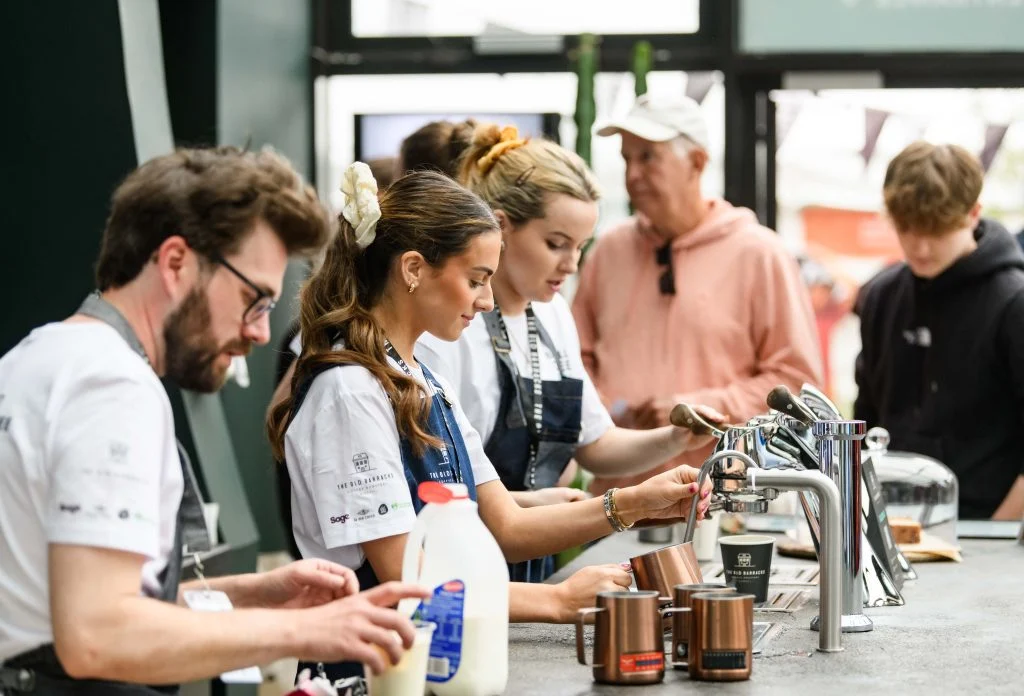Ultimate Espresso Brewing Guide: Crafting the Perfect Cup at Home
The aroma of freshly brewed espresso wafts through the air, tempting taste buds and igniting senses. Whether you’re starting your day, taking a mid-afternoon break, or ending a lovely meal, there’s nothing quite like the rich, bold flavor of a perfect cup of espresso. For many, espresso isn’t just a type of coffee; it’s an experience, a ritual. If you’ve found yourself yearning to master this art at home, then you’ve come to the right place. This is your Ultimate Espresso Brewing Guide: Crafting the Perfect Cup at Home.
Understanding Espresso
Before diving into the brewing process, let’s take a moment to understand what espresso is. Espresso is not merely a type of coffee; it’s a specific method of brewing coffee. It utilizes high pressure to extract flavors from finely ground coffee beans, resulting in a concentrated shot of coffee with a robust flavor and a layer of crema—a creamy layer that caps the espresso shot.
Key Components of Brewing Espresso
-
Coffee Beans: The journey to a great espresso begins with quality beans. Opt for freshly roasted coffee beans specifically designed for espresso. These beans usually have a dark roast profile that accentuates that rich flavor.
-
Grinder: A high-quality burr grinder is a must for achieving the perfect grind size. Espresso requires a fine grind, and consistent sizing is vital for even extraction.
-
Espresso Machine: While a classic espresso machine is ideal, there are many options available, including manual machines and stovetop devices. Choose one that fits your skill level and budget.
-
Water Quality: Since espresso is primarily water, the quality of water you use significantly impacts the taste. Opt for filtered water free from impurities.
-
Tools and Accessories: Invest in a tamper, scale, and thermometer. These tools help ensure accurate measurements and consistency in your brewing process.
The Brewing Process
Now that we’ve covered the essentials, let’s dig into the Ultimate Espresso Brewing Guide: Crafting the Perfect Cup at Home.
Step 1: Measure Coffee and Water
A standard espresso shot requires approximately 18-20 grams of coffee for a double shot. Use a scale to measure your coffee beans accurately. Generally, a 1:2 ratio (coffee to water) is a good starting point, meaning you’ll pull around 36-40 grams of liquid espresso.
Step 2: Grind Your Beans
Using the burr grinder, grind your coffee to a fine consistency resembling granulated sugar. If the grind is too coarse, the water will flow too quickly, resulting in weak espresso; too fine, and you’ll end up with a bitter, over-extracted shot.
Step 3: Tamping
Once your coffee is ground, distribute it evenly in the portafilter and use a tamper to level and compress the grounds. Apply firm, even pressure—aim for about 30 pounds of pressure. A well-tamped puck ensures uniform water flow and optimal extraction.
Step 4: Preheat the Machine
Before you brew, ensure your espresso machine is properly preheated. This step is crucial for maintaining the right temperature throughout the brewing process. Ideal brewing temperature is between 195°F and 205°F.
Step 5: Extraction
Lock the portafilter in place and start your machine. Aim for a brewing time of about 25-30 seconds for a double shot. Watch for the rich, caramel-colored crema to form. If your espresso is extracting too quickly or slowly, adjust your grind size and tamping technique.
Step 6: Enjoy!
Once your espresso is brewed, it’s time to savor the fruits of your labor. You might enjoy it straight, or use it as a base for drinks like cappuccinos or lattes. Pairing your espresso with a tiny biscuit or a piece of dark chocolate can enhance the experience even more.
FAQs
Q1: How do I store my coffee beans?
Store your coffee beans in an airtight container, away from light, moisture, and heat. Only grind the beans you need for the day to preserve freshness.
Q2: Can I make espresso without a machine?
Yes! Stovetop espresso makers, such as Moka pots, can create a strong coffee reminiscent of espresso, though it may not have the same pressure extraction.
Q3: Is espresso stronger than regular coffee?
Espresso has a higher concentration of coffee solids and caffeine per ounce compared to regular coffee, but a typical serving of espresso is much smaller than a regular cup of coffee.
Q4: How often should I clean my espresso machine?
Regular cleaning is essential for maintaining the quality of your espresso. Backflush your machine weekly and descale it every few months, depending on your water’s hardness.
Q5: What if my espresso tastes bitter or sour?
Bitter flavors can result from over-extraction, usually from too fine a grind or too long of a brew time. Sour flavors may indicate under-extraction, possibly from a grind that’s too coarse or a brew time that’s too short.
Conclusion
Crafting the perfect cup of espresso at home is a rewarding experience that can elevate your coffee routine to an art form. The Ultimate Espresso Brewing Guide: Crafting the Perfect Cup at Home equips you with the knowledge and techniques to create barista-quality espresso from the comfort of your kitchen. Remember, practice makes perfect! Don’t be afraid to experiment with different beans, grind sizes, and techniques until you find your signature cup. So, grab your grinder, fire up your espresso machine, and start brewing—your perfect espresso awaits!


